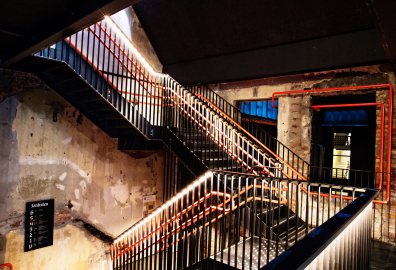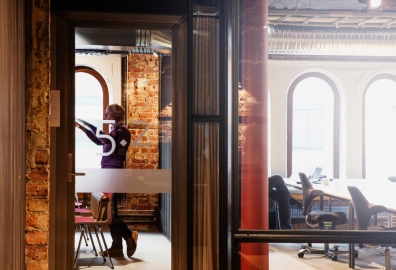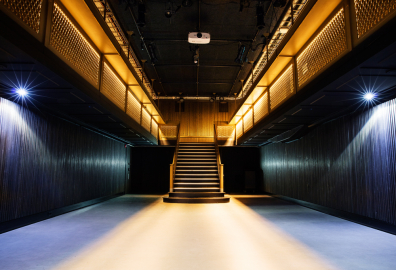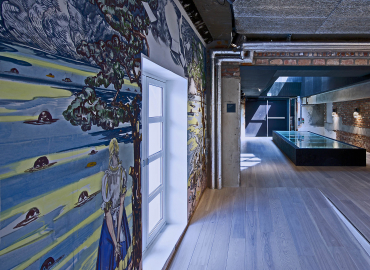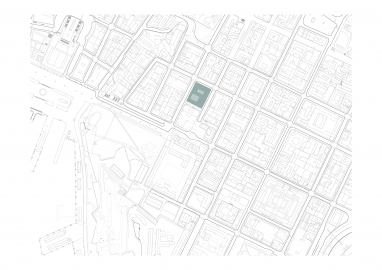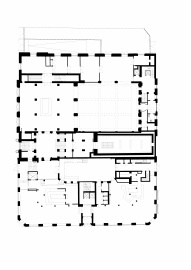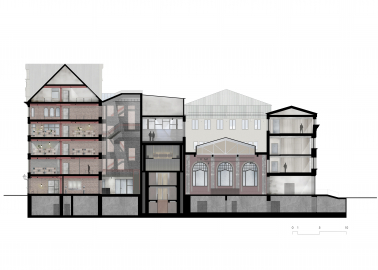Sentralen
Sentralen is the result of transformation of two adjacent banking and office buildings into a center for cultural production and social innovation. We were keen to emphasize the buildings' original qualities and exploit this in the best possible way. The contrast between the rustic and the refined gives the building its distinctive atmosphere.
Sentralen consists of Christiania Sparebank's old bank building from 1899 and an adjacent office building from 1900. As the old buildings were never designed to be connected, to link the two buildings together into a new and overall unity was one of the biggest new changes.
A new elevator and staircase connections were included linking all parts of the building together. A new roof over the former backyard creates an entirely new interior square, the “winter garden”, which has become a new natural focal point for visitors and residents.
The project laid particularly strong emphasis on flexible and functional solutions. All rooms are multifunctional and can be used for various activities (rehearsal and music rooms, working stations, auditoriums, etc.)
Many of the old surfaces that have retained a rustic feel, while certain special room has been restored and returned to its original configuration.
A major analysis of the buildings' condition and opportunities was made before spatial and functional program was developed together with the client. It was exciting to work out what qualities could be preserved, and what lay hidden behind many layers of carpeting, plaster and ceilings.
For everyone involved to take part in the process of building Sentralen a large model was built. There were different solutions for new circulation and design tested and discussed in collaboration with all the participants.
Through the process it has been important to add the fewest possible new elements, only fire and sound conditioning, acoustic absorbers and technical infrastructure. All technical equipment is exposed and can be easily adjusted. The project is built to withstand changes over time.
The project placed great emphasis on universal design. The new circulation is designed so that all users use the same access routes and circulate equally around, with the stepless access routes, contrasting colors and custom lighting integrated in a natural way in the project.
Immediately after the competition, work started on mapping the users and the building, and which features could be accommodated. An important premise was to take buildings as they were, without changing the basic structure significantly. Both buildings had many layers from various refurbishments during the last 30-40 years, and to cleanse the buildings was an early decision, so that the original structures could emerge. Many container loads of debris were carted out the process.
Several structural changes were made in the protected facades and interiors to open up the former bank buildings and create an inviting and most welcoming building.
The buildings have fairly high conservation value. Early in the process a good dialogue with the Cultural Heritage Management Office in Oslo was established, so that various pros and cons were discussed both from an architectural and preservation point of view. This created a very positive relationship of trust, in which all parties were satisfied with the end result, despite the surprising intervention and solutions.


